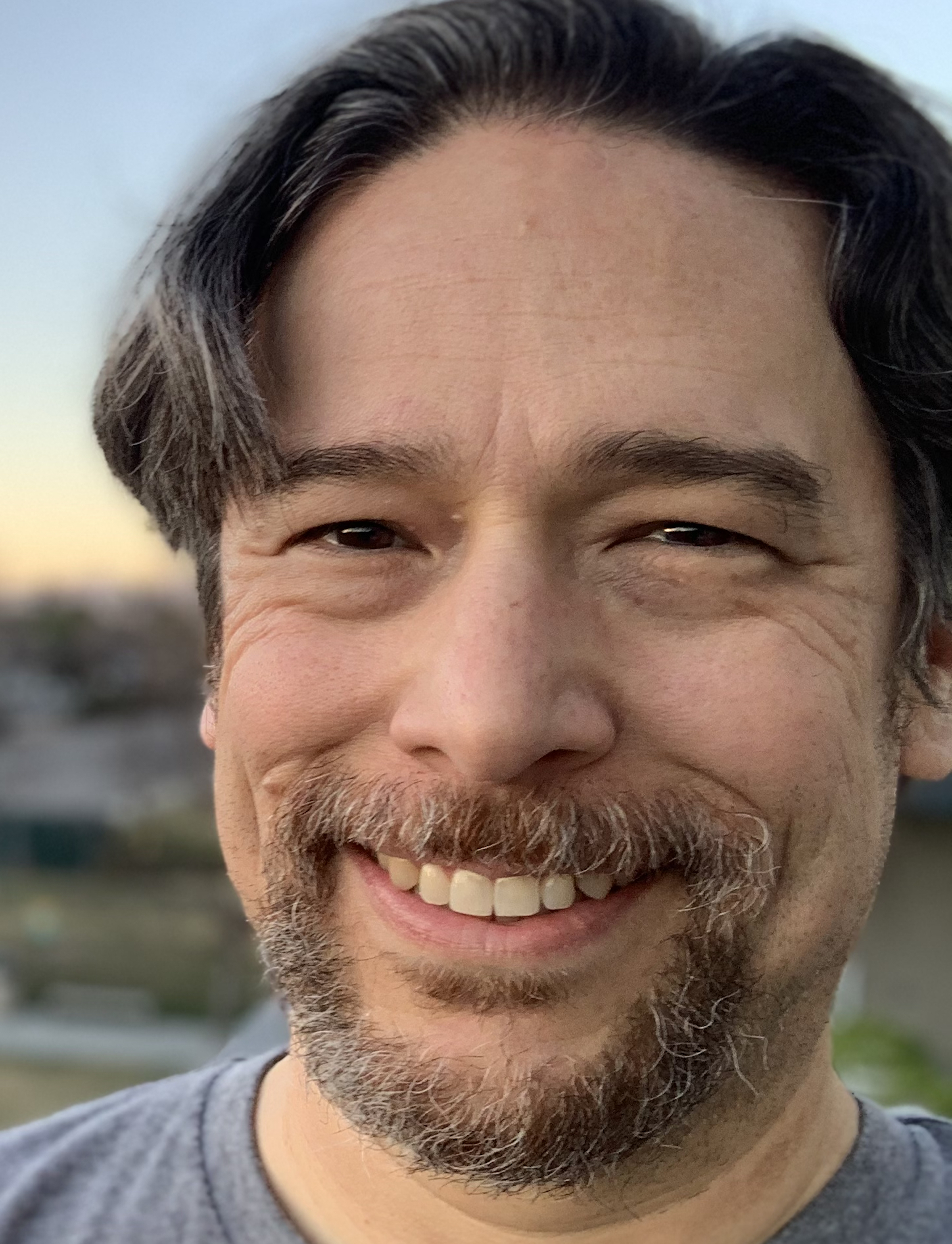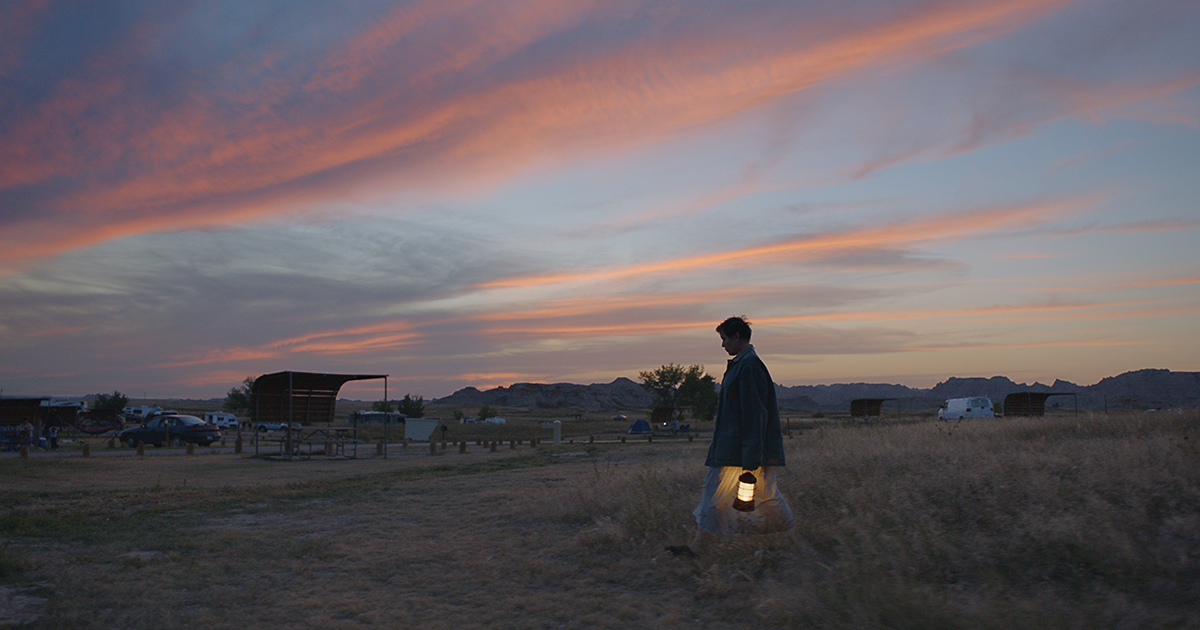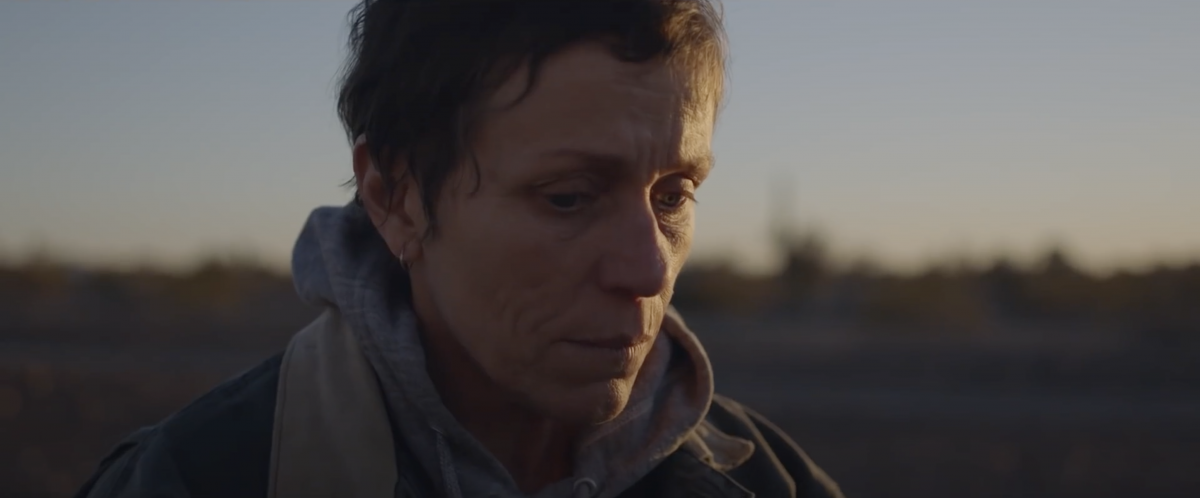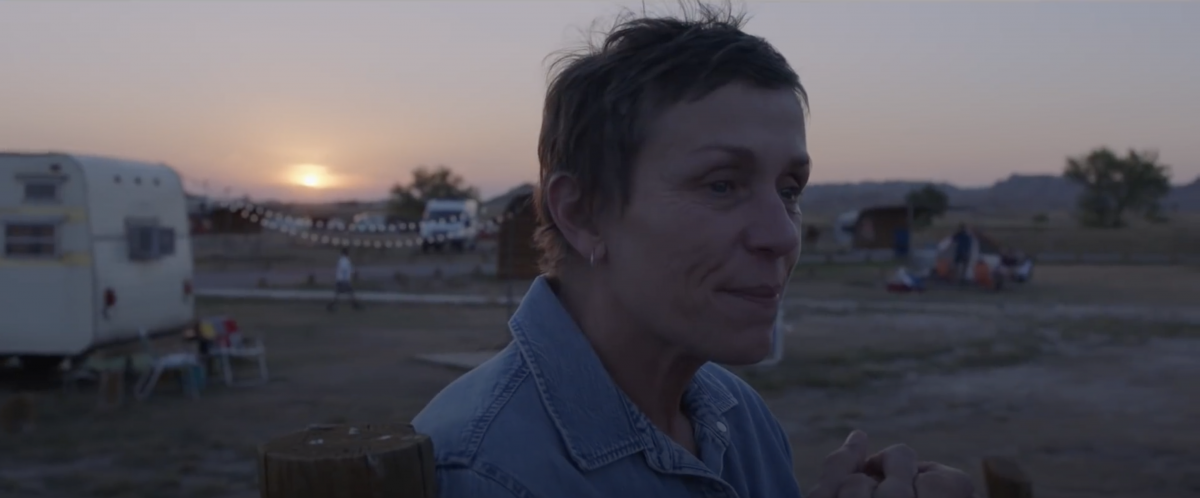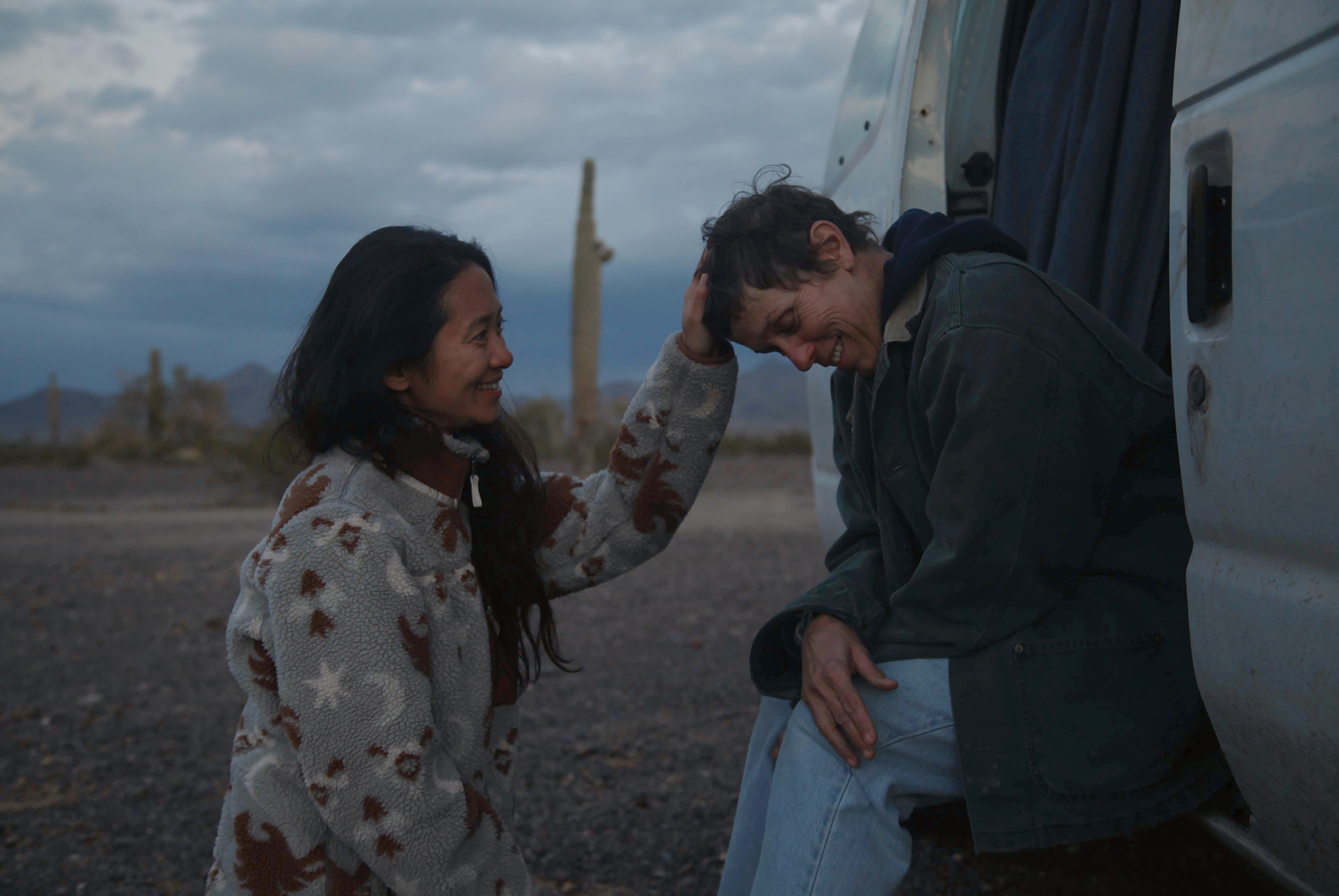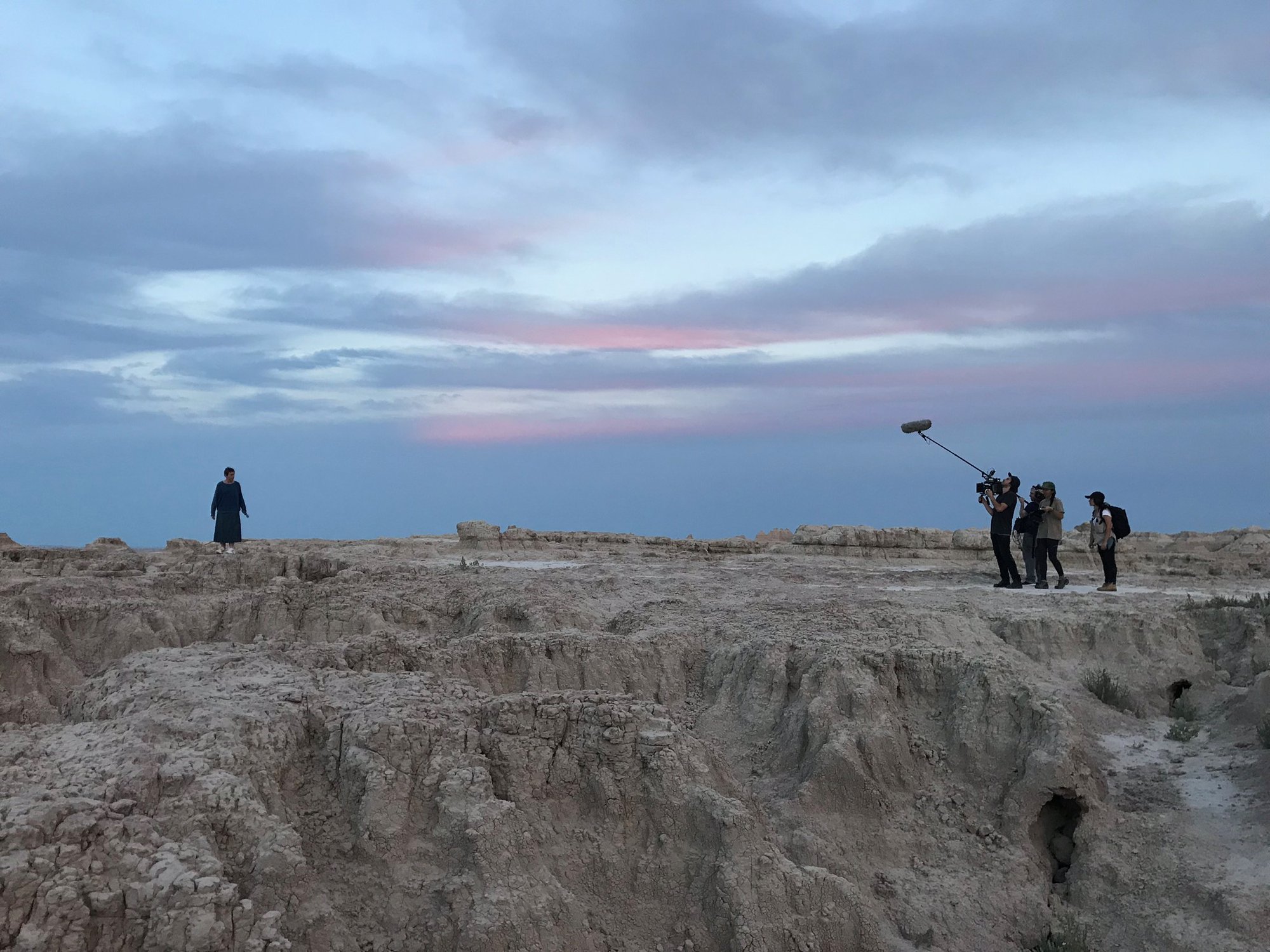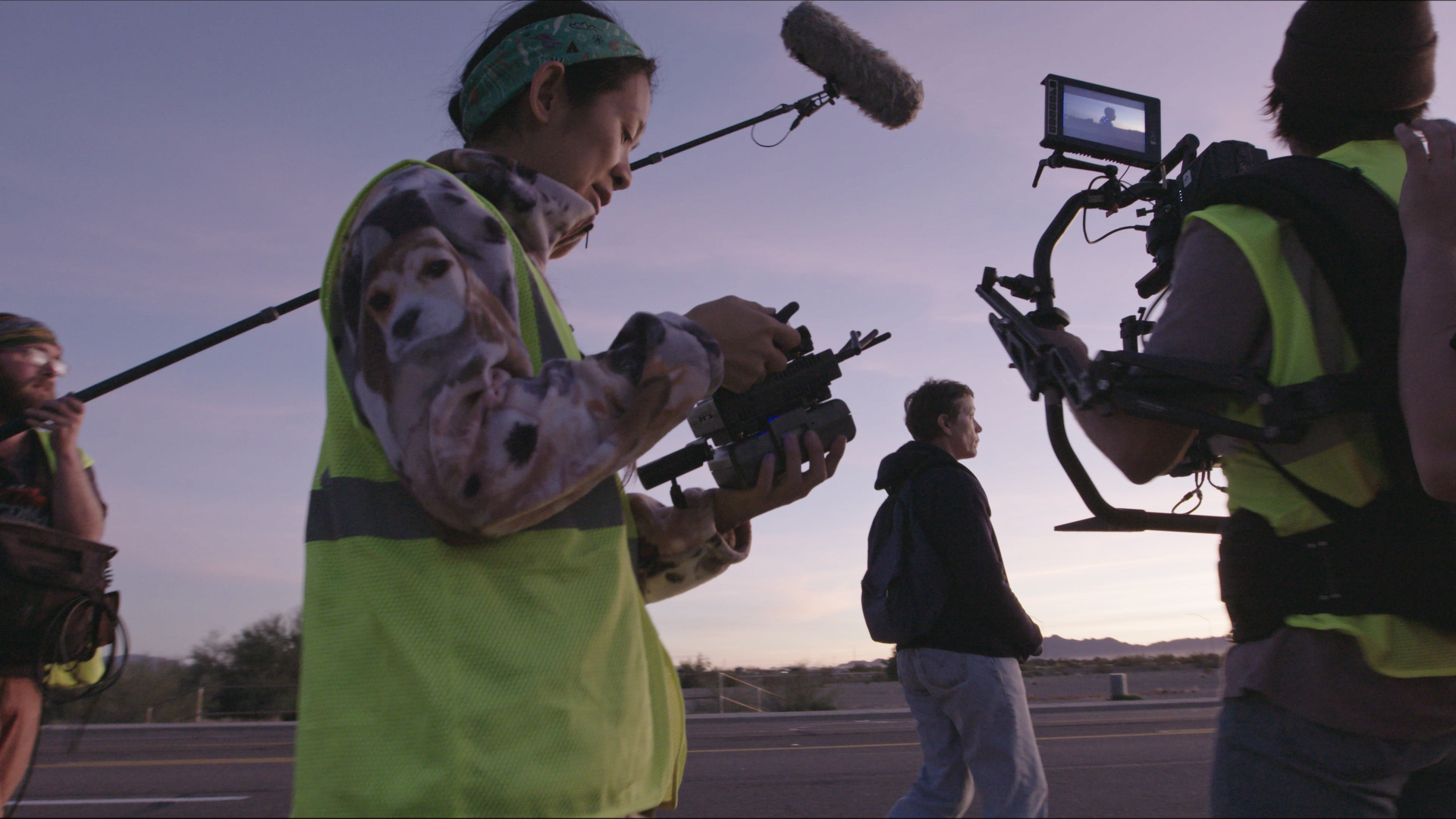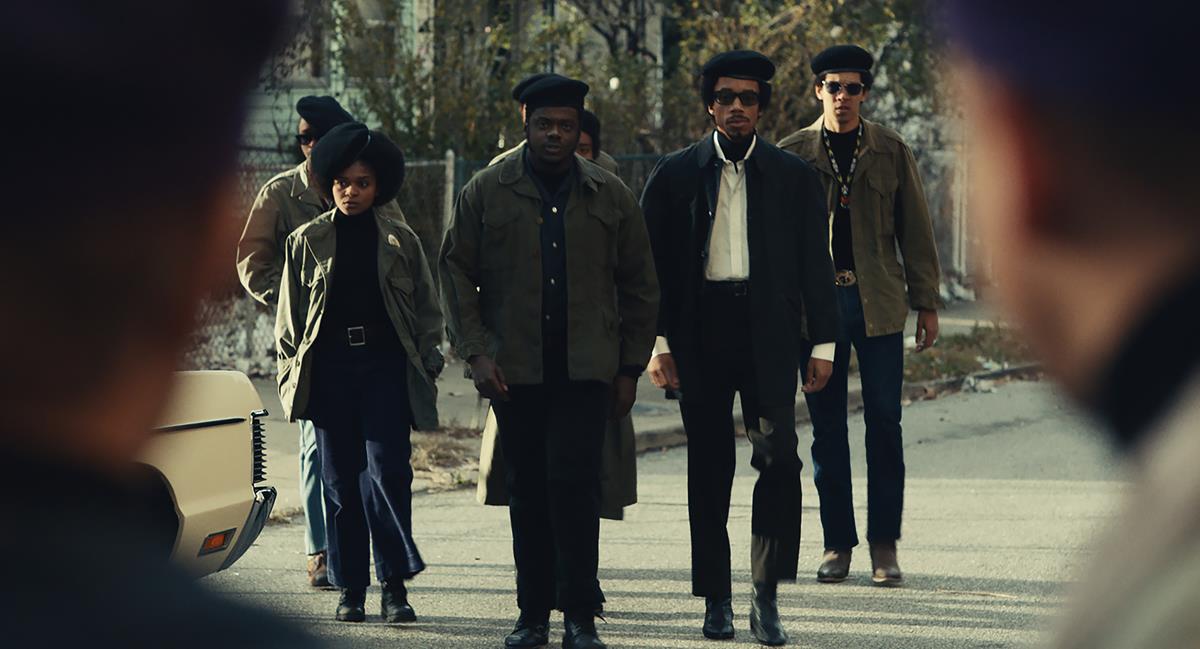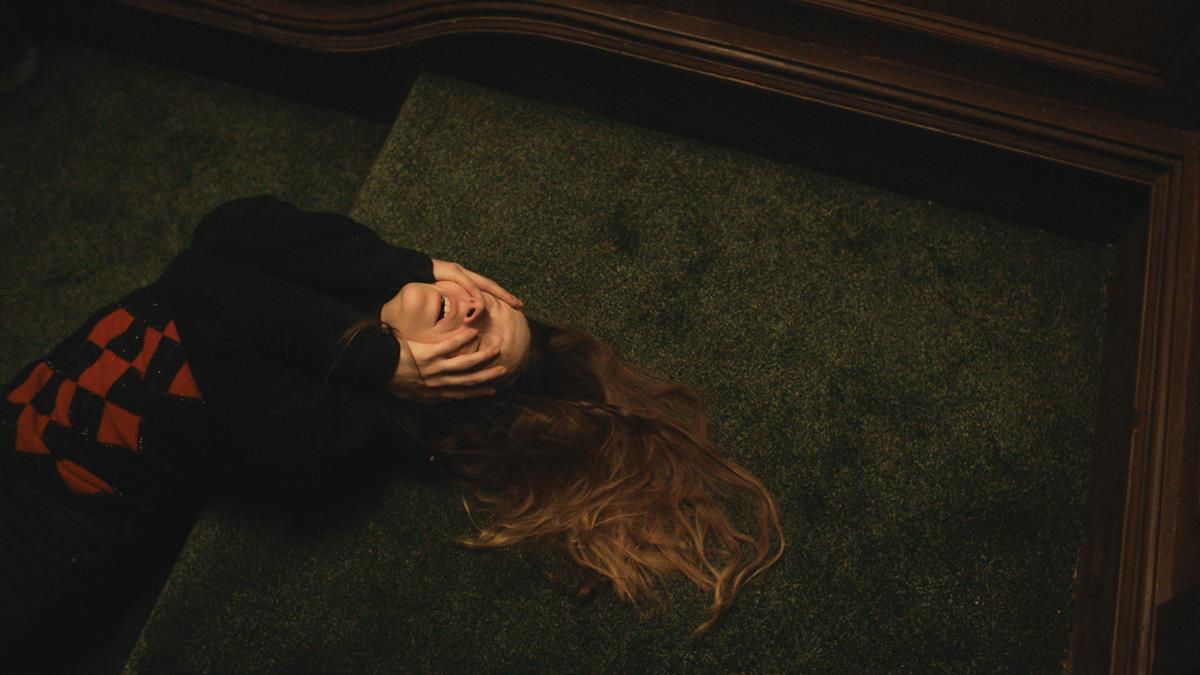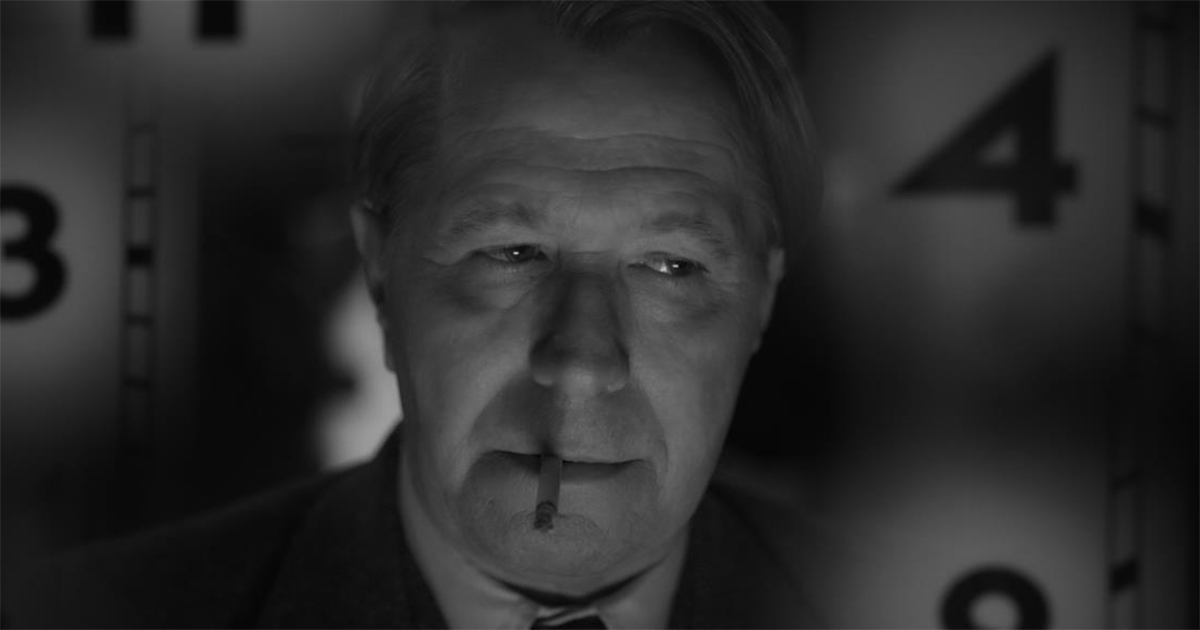Nomadland tells the story of Fern (Frances McDormand) as she joins the ranks of America’s nomads. After the economic collapse of her hometown and the earlier loss of her husband, Fern strikes out on the road in her van/home, named Vanguard. “I am houseless,” Fern says of her van, “Not homeless. There is a difference.”
Chloé Zhao (The Rider) directed and edited the film, which she adapted from the book Nomadland: Surviving America In The Twenty-First Century by Jessica Bruder. Cinematographer Joshua James Richards was the director of photography, a title he also held on Zhao’s first two features, The Rider and Songs My Brother Taught Me.
“Zhao and Richards’ visual approach on the film carries on an aesthetic they established with their 2017 film The Rider,” explains Adam Chitwood on Collider. “The movie is bathed in natural light and lingers on faces and bodies, emphasizing the humanity of the people at the story’s center. It’s gorgeous to be sure, but gorgeous with purpose – Richards’ naturalistic photography emphasizes the beauty of the American landscape, but also the beauty of the people who populate it.”

Fern’s journey in Nomadland, which was shot pre-pandemic, parallels the journey of many who struggled through 2020. As Eric Kohn wrote on IndieWire, “Intentionally or not, Nomadland reflects the essence of 2020, and it’s no surprise that the achievement comes from a filmmaker whose body of work revolves around the quest for personal satisfaction on the margins of American life. Nomadland doesn’t exactly make the case that everyone would be better off living in an RV. But it’s a vivid salute to the catharsis of moving ahead at all costs. That’s an inspiring idea in 2020, and an especially welcome one as we finally escape its clutches.”
It Will Mean Something to Me
“For me to make a film, I have to know it will mean something to me, help me grow as a person,” the director told Benjamin B from American Cinematographer. “So that becomes a very crucial thing when deciding to do a project. It doesn’t matter what genre, because filmmaking is really a way of living, and life is short.”
As with her first two features, Zhao cast many of the actual people portrayed in the film to play themselves or versions of themselves, along with actors McDormand and David Strathairn (Good Night, and Good Luck, Matewan) in lead roles. Initially dubious, concerned about being misrepresented by outsiders, the nomads warmed to the director, who brought her experience using the real people who inspired the stories in her films as actors. Directing assistant Hannah Peterson told IndieWire, “You could see her listening to these individuals telling their stories, and then collaborating with them to fold their own narratives into the script. Chloé really allows people to choose how they want to represent themselves.”
“Sometimes people feel like they are not important enough to be in a movie,” said Mollye Asher, producer on Zhao’s three features. Asher continued, telling IndieWire “Once they meet Chloé, they open up. She makes people feel special. Chloé truly wants to hear their story and she wants them to tell it.”
The nomads of Nomadland are generally retirement-aged people, who have left behind their fixed addresses for an itinerant existence. Many, like McDormand’s Fern, have had their life savings wiped out by the Great Recession and their homes devalued when the housing bubble burst.
Charlene Swankie is one of the nomads profiled in Jessica Bruder’s book and she plays a fictionalized version of herself in the film, starring alongside McDormand. Speaking about her director, Swankie said, “At first, she was intimidating, but after getting to know her better, I understood that she was the only one seeing the bigger picture. When she asked me to do something that seemed contrary to my personality, she gently reminded me it was a story, not my real life. I thought she was amazing. I learned a great deal from watching Chloé and Frances collaborate.”
“I had actually never heard of Fran [McDormand] or seen any of her movies,” said Swankie of her co-star, but that “she reacted to me as if I were the famous movie star, and she was the adoring fan. I confessed I didn’t have a clue who she was – she didn’t take offense; she just began talking excitedly about working together. I came away feeling like I had just reconnected with a long-lost friend. I really felt more loved, wanted, and appreciated while making the film than I have ever felt in my life.”
A Symbiotic Workflow
After working together on two previous features, Zhao and Richards have established a symbiotic workflow, so that he often knows ahead of time what his director needs out of a shot.
The DP explains in an episode of the Frame & Reference podcast, hosted by Kenny McMillan, “Chloé does a broad shot-list, so there’s a pretty solid plan at the beginning of every scene. We both know what she needs in the edit. Sometimes I don’t even cut the camera, I just move quickly to get the moments Chloé wants. We’re constantly looking at each other. It’s unspoken — I kind of know [what she’ll want].
“[T]here’s definitely a common language that Chloé and I have developed together, those collaborations become so valuable because of so much of the work’s been done… [T]hinking back on conversations, I would just say, ‘I was thinking of the camera could move more in this film probably what do you think?’ she was like, ‘Yeah, great. Do it.’ and she just sort of trusts me to run with that. Obviously I’m never going to do anything that she hasn’t first kind of come up with, but… I just know what she likes.”
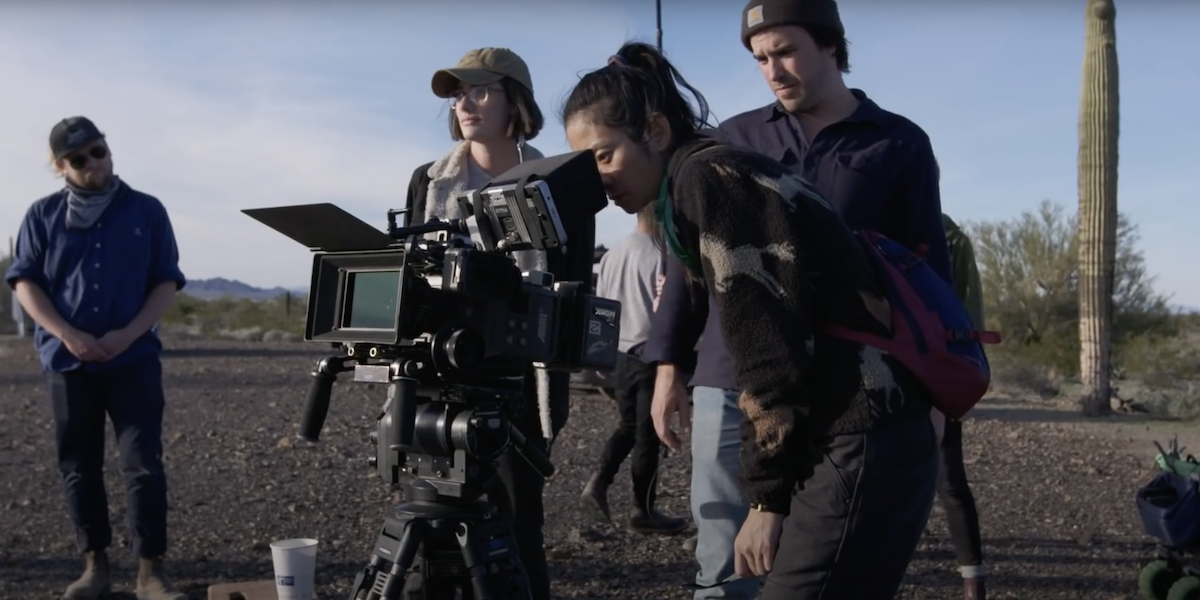
Expanding on their connection, Richards told Collider, “[B]y the time it came to Nomadland, there’s such a trust between us, and you’ve really lived the film for months before you get to set, so there’s a silent understanding. But then also Chloé will come and have really specific frames in mind sometimes, and I’ll have no problem with her putting a hand on the camera, doing that.”
Zhao has great respect for the dignity of the film’s subjects, which both she and Richards demonstrate in their work. She told American Cinematographer that “…when you have that, it shines through in how you film them. I think an operator should have that kind of empathy for a person when their light shines. That’s how they can see this individual even in the darkest times. Josh has that empathy, and that’s what makes him a great cinematographer.”
The Myths of the American Landscape
Richards grew up in the U.K. on a steady diet of American westerns like The Searchers, courtesy of his father. “I got really into reading about Native America around 14, 13. I read Bury My Heart at Wounded Knee by Dee Brown, in particular, and that just kind of set my mind on fire,” he said on Frame & Reference. “[I read about] the myths of the American landscape and the myth-making machine that would become cinema, in defining, rightly or wrongly, the American character and history, and that started to really interest me.”
After attending NYU, Richards headed west to find that landscape he had only seen on the screen back home. Continuing on Frame & Reference, he said, “[T]he whole time I was in New York, I was longing for that landscape. You know, like in Nomadland and these things. That’s why I came to America. You know, I wanted to get into the heartlands.”
People As They Are
The landscape of the heartland is not only the backdrop to the story, but interacts with the nomads, even as they become part of it. It took nature time to raise the mountains and level the plains of the midwest, but age gives the landscape character and beauty. Age has also weathered the faces of the retirement-age residents of Nomadland, but unadorned with make-up, their hair not attended to at every break by a professional stylist, the nomads’ character and beauty was captured by the filmmakers.
“The film is really Frances’ face, isn’t it?” Richards said in American Cinematographer. “Her face is lit every possible way in this movie. I shot all the close-ups with a 32mm [Arri/Zeiss] Ultra Prime [paired with Arri Alexa Mini and Arri Amira cameras], and I did get close. Fran was a collaborator all the way. There wasn’t a makeup artist on set. Chloé and I are kind of challenging that approach to filmmaking. We want to see these people as they are because they’re beautiful.”
“When I see Frances McDormand and Swankie… I mean, just as a cinematographer, it’s been one of the joys of my life filming their faces, because faces only get more interesting with time,” Richards told Collider. “We just poisoned our mentality so much and we’re so scared of death, that we’ll do anything we can to pretend that it’s not real. Whereas this film is about embracing death, and it is about embracing endings, to how we end, you know?”
As the camera operator, Richards described developing a close camera-actor relationship with McDormand in order capture both performance and character in her portrayal of Fern. “[T]hat was a first for me,” the DP told Chitwood at Collider, “and a delight to have an actor that knows… It’s not about her finding her angles, it was learning from her as a storyteller. Again, it’s not cosmetic with Fran, she’s cutting her own hair, no makeup team on the horizon, and I worked quite closely with her and Chloé with the costume as well, and also in the building of Vanguard from a production design point of view.

“Just to start with that, Fran had lots to say, because Vanguard truly is a character in the film. I mean it really is and she helped us build that. It was her idea for example to bring in her father’s plates, little props like that. But yeah, and it was incredibly intimate in there with Fran and I, you know?
“A critic she likes to quote once described her face as ‘a national park,’ and it’s very true… there’s a complexity to Fran’s face, there’s a complexity to her as a person and her performances… I just think she brings a humor and a relatability to characters that you just rarely see.”
Go, Look Lost
When it came to Fern interacting with the landscape, an antagonist as well as a setting, DP and actor had to perform a dance, trading off leads to balance acting and capturing the image.
“[I]n the badlands when she’s lost,” Richards told Collider, “dude, it’s not easy to do that as an actor, ‘Go, look lost,’ and to do it to hit these beats, and I would just kind of be reacting to her, really. I would generally tell her, ‘Look, I’ve got to be looking that way, Fran, because obviously the light and stuff. But go for it, I’ll adjust, don’t worry.’ And that was where the Ronin 2 really came in handy, it was about adjusting to what was happening rather than giving people very specific marks and things to hit. We really needed to allow freedom to be felt all the time.”
The Camera’s Observing Them
“All our nomads are, you know, first time actors and never, never been in front of the camera for the most part…” Richards explained on the Frame & Reference podcast, talking about the unique considerations of working with neophyte actors, “That’s when, as cinematographers, you put the tools aside and you think about the approach… [P]eople are literally sharing their stories with us on camera and it’s like, are you really gonna stick a silk in front of their face and blast them with a light? …it’s enough that the camera’s observing them.”

“[W]hen it comes to lighting and makeup…you want to make sure you have the actors back and they need to look a certain way. However, on a film like this, man, if you’re not celebrating the lines drawn in people’s faces, then you shouldn’t be shooting it.”
On the relationship between camera and subject, the DP told Collider, “It’s all about getting the camera into the place of intimacy that is not forced, but real…there’s a connection between the camera and the subject. And that, I just think that comes about because the operator actually truly cares about the subject.”
The Light in the Sky
Budget and subject matter dictated a stripped down approach to production. “In retrospect, it was losing all the trappings of what a conventional film set is that forced us to think differently,” Richards told Matt Grobar of Deadline. “Because you have all these limitations, you have to think, ‘Okay, well we don’t have money for lights, so it’s natural light. We don’t have money for a crew, so there’s going to be like eight of us… [I]t was an approach that was forced upon us, and I’m really grateful for that because it introduced to me a way of filmmaking that I’m really excited about.”
“From very early on, I made films so cheaply that we had nothing in our favor but the light in the sky and the freedom of time,” Zhao told American Cinematographer. “So if I can’t put on a huge production, I’m going to wait for those 20 minutes [until the light is perfect]! No matter how much money you have, it’s very hard to get that light right.”
“We used available light as much as possible and practicals inside. We stuck to that for 90 percent of the film. It was really fun to take the audience from those hundreds of miles of badlands in either direction into the cocoon of Vanguard and the little paper lamp,” Richards explained to American Cinematographer.
“Those moments, when the sun is gone but is bouncing up into the sky, are special and precious. We try to be somewhere quiet and intimate, like following Fran [and] Swankie through the desert as Swankie is talking about the twilight of her own life” Richards continued. “These things feel spiritual to me, even though I’m not a spiritual person. Those are the best parts of life, when you find yourself in a moment where everything seems to come together,”
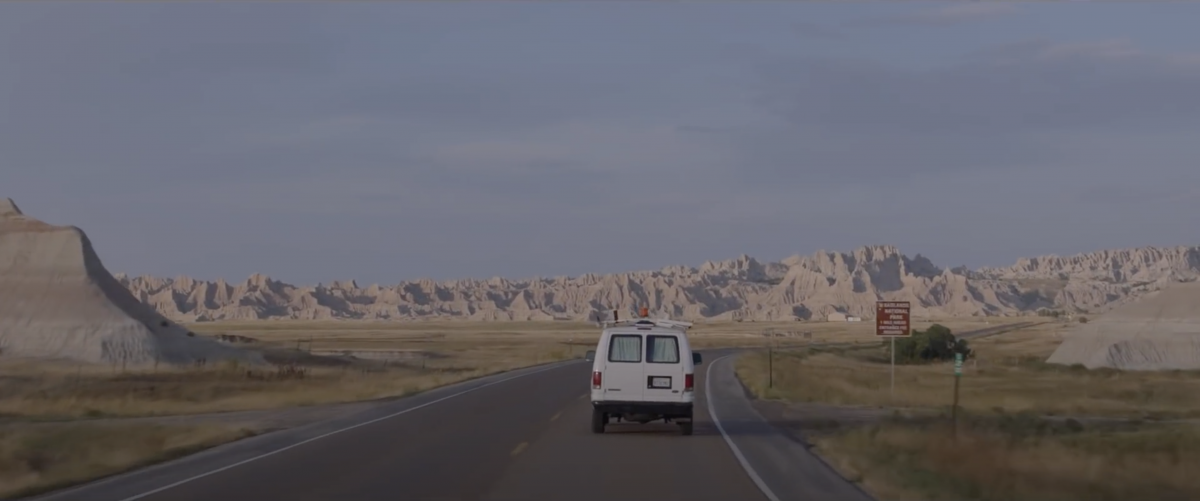
Nomadland is currently in theaters and streaming on Hulu.

